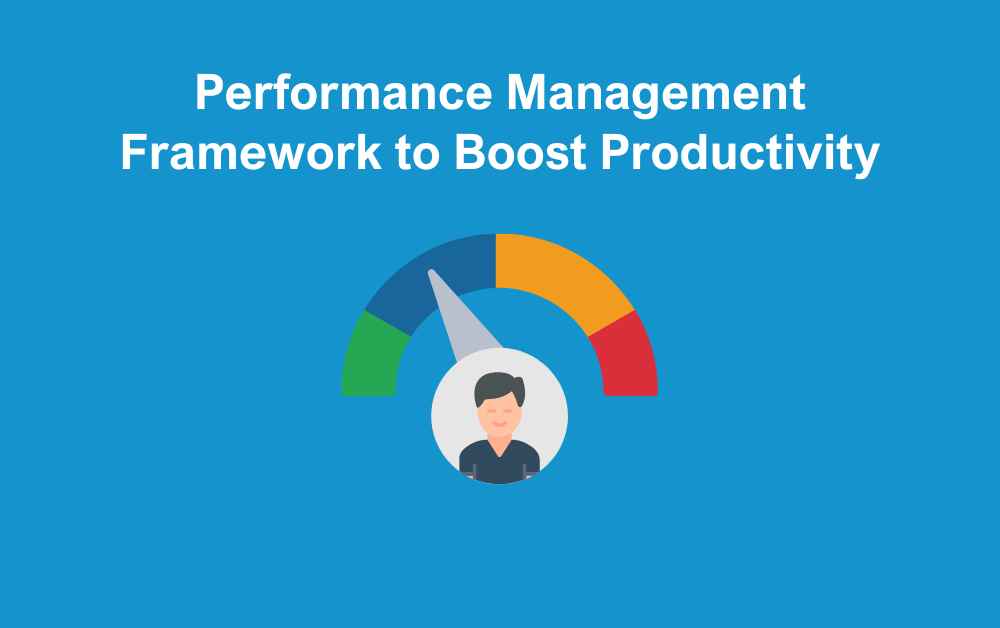A well-structured performance management framework is a powerful tool for improving productivity, enhancing employee engagement, and achieving business goals. When implemented effectively, it can align individual performance with organisational objectives, making your team more focused, motivated, and efficient. In this blog, we’ll explore what a performance management framework is, why it matters, and how to implement one that delivers real results.
What Is a Performance Management Framework?
A performance management framework is a strategic plan designed to monitor, evaluate, and improve employee performance. It combines clear goal-setting, regular feedback, continuous development, and fair assessment to drive consistent improvements across all levels of an organisation.
This framework goes beyond annual appraisals. It creates a culture of ongoing communication and development, which is essential for today’s dynamic and fast-paced work environments. Overall, the main aim being to align business objectives with employee goals.
Why Is a Performance Management Framework Important?
Implementing a performance management framework is essential for several reasons:
-
Improves productivity: Clear expectations and regular feedback help employees stay on track and perform at their best.
-
Boosts engagement: When employees understand how their work contributes to business goals, they feel more valued and motivated.
-
Supports development: A structured approach helps identify skill gaps and development needs, enabling better training and growth opportunities.
-
Enhances retention: Employees who feel supported and recognised are more likely to stay with your company.
-
Enables better decision-making: Objective performance data supports workforce planning, succession planning, and overall business strategy.
Key Components of an Effective Performance Management Framework
To design and implement a performance management framework that boosts productivity, consider including the following elements:
1. Clear Goal Setting
Use SMART (Specific, Measurable, Achievable, Relevant, Time-bound) goals to set clear performance expectations. Align individual goals with wider team and organisational objectives.
2. Regular Performance Reviews
Instead of relying solely on annual appraisals, introduce frequent check-ins—monthly or quarterly—to discuss progress, challenges, and support needs. We make sure we meet with our employees at least every 6-weeks. This way, you can resolve any issues before they escalate and celebrate achievements in real time.
3. Continuous Feedback
Encourage two-way feedback between employees and managers. Constructive feedback helps reinforce positive behaviours and correct issues early.
4. Employee Development Plans
Create personalised development plans to support career growth. Provide access to relevant training, mentoring, and learning opportunities.
5. Recognition and Rewards
Recognise achievements regularly. A simple thank-you or formal reward scheme can go a long way in motivating your team.
6. Data and Analytics
Use data to track progress and identify trends. HR software can help collect, analyse, and report on performance metrics to support informed decisions.
How to Implement a Performance Management Framework
Implementing a performance management framework doesn’t need to be overwhelming. With the right approach and tools in place, it can be a straightforward process that brings real value to both your people and your business. Follow these key steps:
Step 1: Assess Your Current Approach
Review your existing processes you have in place currently. What would you say is working? What’s not? Gathering feedback from managers and employees will help you to identify gaps.
Step 2: Define Objectives
What do you want to achieve with your performance management framework? Whether it’s improving productivity, reducing turnover, or increasing employee engagement, set clear goals from the outset. This will ensure your goals are more easily met.
Step 3: Engage Leadership and Stakeholders
Ensure senior leaders and wider management teams are on-board. Their involvement is crucial for successful implementation and cultural alignment.
Step 4: Develop and Communicate the Framework
Design a process that fits your business needs. Communicate it clearly to your team, outlining what they can expect and how it will benefit them.
Step 5: Management Training
Equip line managers with management training which will give them the skills needed to give feedback, set goals, and hold meaningful performance discussions.
Step 6: Monitor and Adapt
Performance management should be a living process. Review the framework regularly, gather feedback, and adjust where necessary.
Measuring Progress When Implementing a Performance Management Framework
Measuring progress is key to understanding whether your performance management framework is delivering the results you set out to achieve. Without tracking the right metrics, it’s difficult to know what’s working, what needs to be adjusted, and how your people are engaging with the process.
Start by setting clear, measurable objectives at the outset. These could include improved employee engagement, more consistent performance reviews, better alignment with business goals, or faster development of skills across the team. Once those targets are in place, progress can be assessed using both quantitative and qualitative data.
Key indicators might include:
-
Completion rates of performance reviews – Are managers and employees following through with regular check-ins?
-
Quality of feedback – Are conversations improving? Consider using surveys or peer feedback to assess whether feedback is becoming more constructive and developmental.
-
Goal attainment – Track how well individual and team goals are being met over time. This gives insight into whether the framework is helping to drive performance.
-
Employee sentiment – Use engagement surveys to gauge how your people feel about the new approach. Are they finding it helpful, fair, and supportive?
-
Manager capability – Monitor how confident and capable managers feel about having performance-related conversations, and offer support or training where needed.
Remember, this isn’t just about ticking boxes – it’s about making performance management a meaningful part of everyday working life. Regularly reviewing these indicators and gathering feedback will help you refine the process and ensure it adds value to both your people and the business.
Final Thoughts
A robust performance management framework is essential for building a high-performing, engaged workforce. When employees know what’s expected, receive regular support, and are recognised for their efforts, they are far more likely to thrive.
By aligning individual performance with organisational goals, your business can unlock greater productivity, improved morale, and long-term success.
If you’re unsure where to start or need help reviewing your current approach, our HR experts can support you in designing and implementing a tailored performance management framework that fits your business.
Ready to improve your team’s performance?
Get in touch with us today to learn how we can help you create a performance management framework that works.







